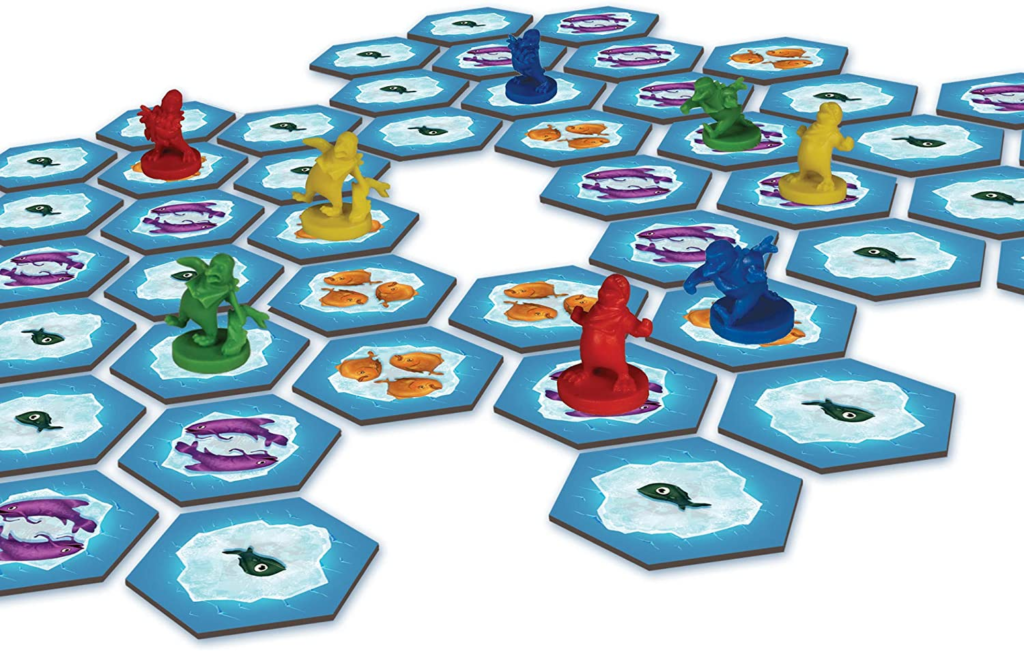A couple years ago, I bought the FFG edition of Hey, that’s my Fish! from a family-owned comic book store in Halifax, Canada in an attempt to support their local economy. Penguins are cold, and Canada was cold, and I had no interest in buying a comic book, so I bought the game and tossed it in my luggage on the trip home. I had no intention of ever playing this game, but I thought it was nice to have. It’s a classic family game, right?
Wrong. I finally cracked the game open this January, and it is so much more than a family game. I am dead serious when I say that Hey, that’s my Fish! needs to go into the same sentence as Chess, as Go, as Hex, as any of the hallmark abstract strategy games of all time.

The game can be played with 2, 3, or 4 players. I am, of course, most compelled by the two-player version, but have played with each number at least once. The players populate a board of hexagonal ice floes with their penguins, and on each turn one penguin slides in a straight line. Then the ice floe that the penguin used to be standing on is removed by the player who moved off of it. Some hexagons contain more fish than others, and the winner is the player with the most fish.
It’s good to get to the hexagons with multiple fish, but much more important is making sure that your penguin does not get stranded. The board is shrinking every move, and the player who remains afloat on the largest chunk of ice is likely to win. Hey, that’s my Fish! is an area control game, except the areas may not consist of compact chunks of hexagons. They are scattered assortments of spots, reachable only through a certain path of straight-line moves that your opponents will not be able to obstruct. It’s hard to visualize which block of ice will end up becoming yours until it is too late.
Hey, that’s my Fish! is a miracle in that it can work as a family game, a social game, a competitive game, a light game, or a heavy game. The theming is almost too good to be true, and I wonder if it was the penguins or the deep strategy which came first during the design process. The components are nice and the box is tiny. The learning curve is instantaneous and then slow thereafter, like that of Go. My only complaint is that it’s difficult to pick up hexagons in the middle of the board near the start of the game.
This game is a jack of all trades. If you enjoy board games and want to spread the love to people who usually don’t, you should own this game.
